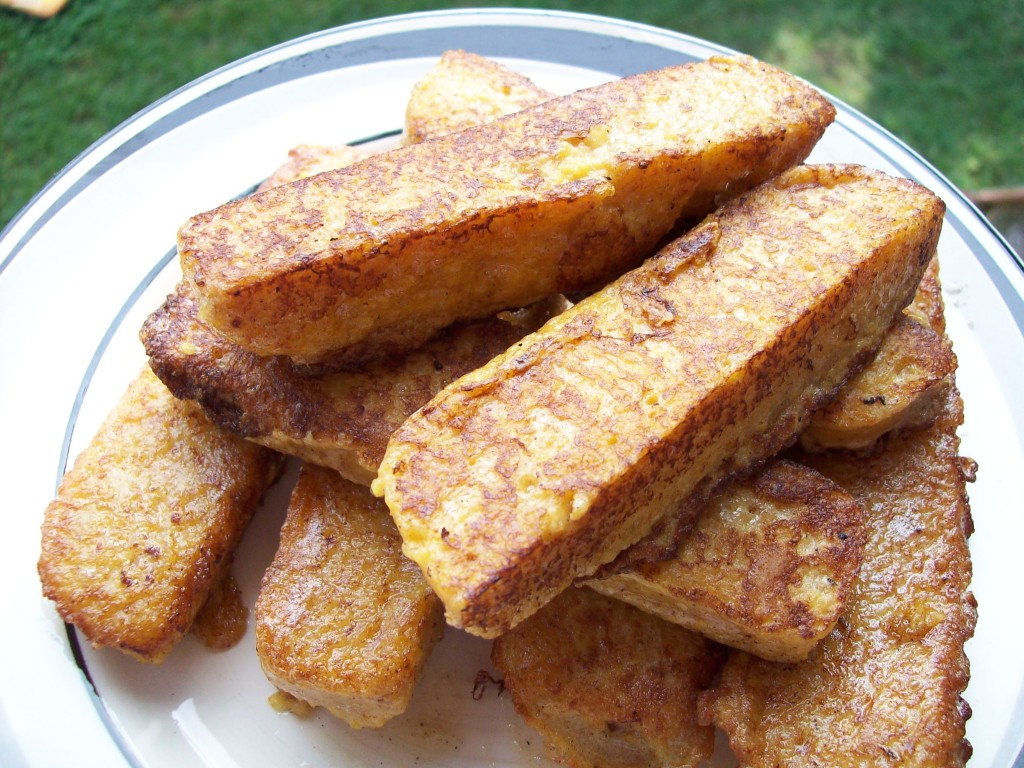If you’ve hung around this blog for any length of time, you may know that about a year and a half ago (gosh, that long??? Really???), our family had to undertake a serious gluten-and-dairy-free challenge as part of evaluating L.’s physical health and its impact on his sensory issues. While we were fortunate in the outcome — no significant signs of a food allergy or serious intolerance, so we were able to resume eating wheat and dairy — the experience made us, as a family, more mindful of what we were eating, and more sympathetic to the challenges food-allergy families face every day.
As a result, we’ve become much more cautious about gluten, in particular. While there’s no reason for us to believe that L. (or any of us) has a PROBLEM with gluten, per se, I have noticed that he appears to be generally more sluggish when he has too much of it, at least in sort of widely available forms. That is to say, a full week of commercial bread 1-2 times a day — whole-wheat or not — and a side of whole-grain pretzels at snacktime every day doesn’t appear to sit as well with him as a more protein-rich, vegetable-rich, varied-grain diet. (Although, if we’re being honest — how many of us wouldn’t end up saying the same thing, if we paid enough attention to how we really feel when we keep up a steady stream of sandwiches and whole-wheat pancakes vs. how we feel when we shake things up a bit more?)
So while we’re not a gluten-free family by any stretch of the imagination, we’ve changed some things in the past eighteen months. For one thing, almost all of our breads and bread products, most of which I’ve usually made myself anyway, are now made using traditional fermented sourdough techniques from wild yeast — making them more digestible and more nutritionally available to us. (More on sourdough another time.) For another, we now bake many of our old standbys with whole spelt flour rather than strict wheat flour, which has a different gluten structure and can be more gentle to the system. And of course, I’m always happy to find another way to just avoid the issue altogether and provide us with a real, whole-food-based, gluten-free option that’s easy to make, delicious to eat, and doesn’t require any sort of crazy gums, binders, or madly expensive flour substitutions.
Not all of my experiments in that realm necessarily pan out the way I’d like them to, but these gluten-free Pumpkin Polenta French “Toast” Sticks are a good example of a dish that’s just as satisfying as the original, probably more nutrient-dense, and not any harder on my time or my wallet. Slightly crisp on the outside and creamy on the inside, they’re almost like a marriage of French Toast and custard. I’ve spiked them with the flavors of fall, so the hint of warm spice and pumpkin are perfect for the first faintly chilly mornings of the back-to-school routine.


Have you ever tried freezing this? Just wondering if I made a double batch if it would freeze and reheat ok. Would you just freeze the polenta or cook it all up and then freeze it?
I think you should be able to cook and freeze without an issue. You’d just have to experiment with whether a toaster oven reheats it best, or whether the sticks might need a turn in a hot pan to get them refreshed properly.